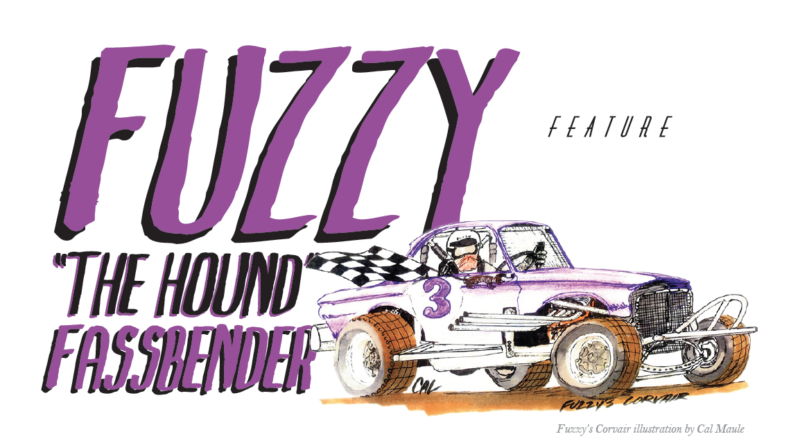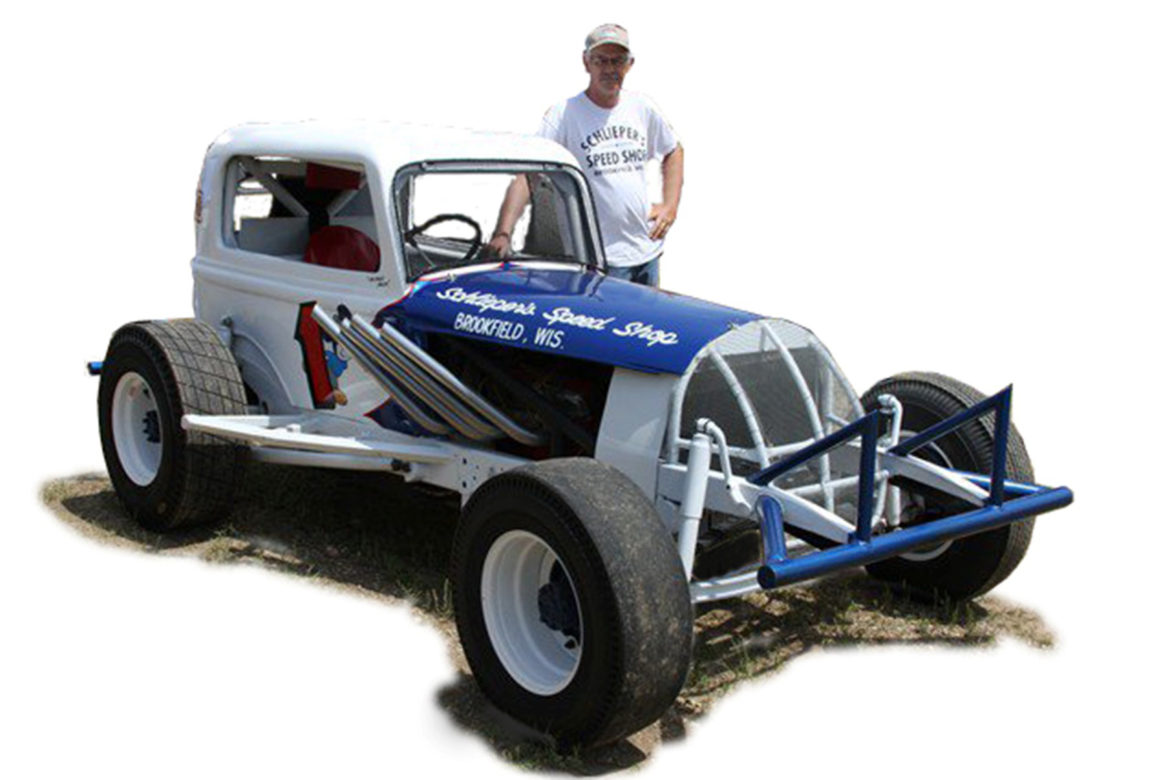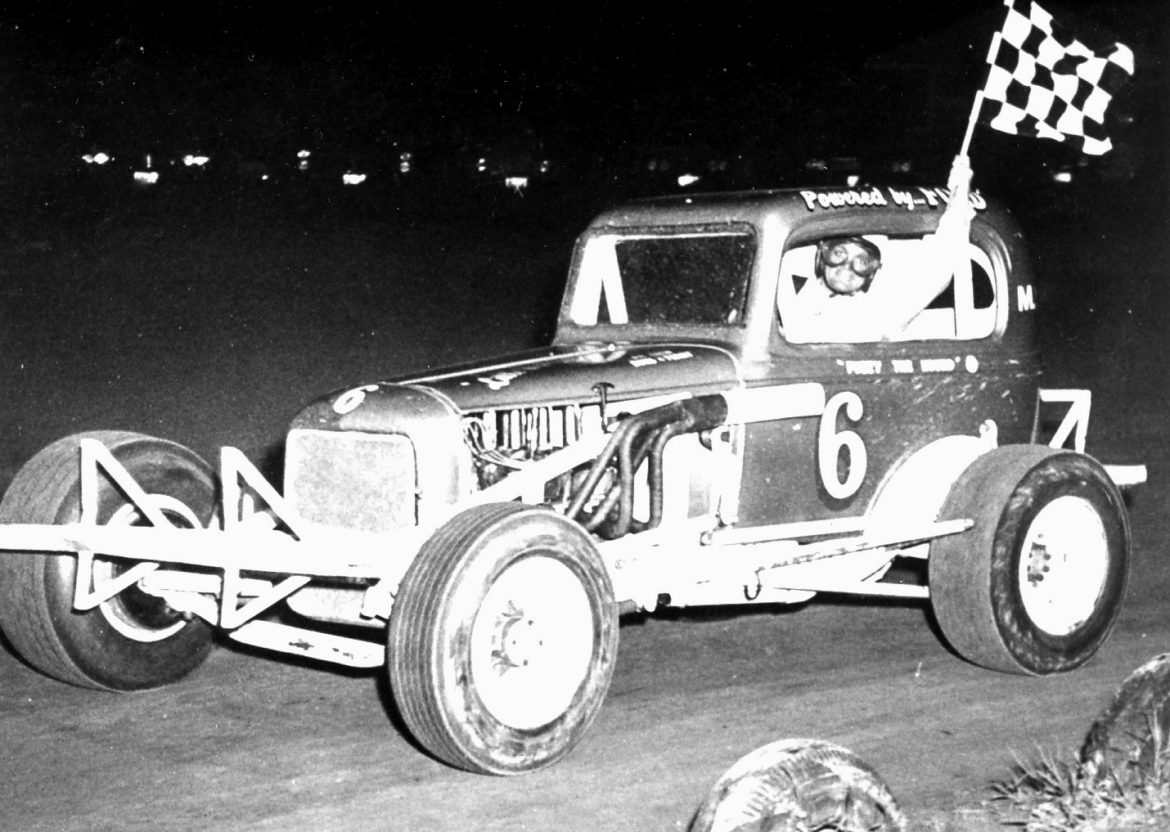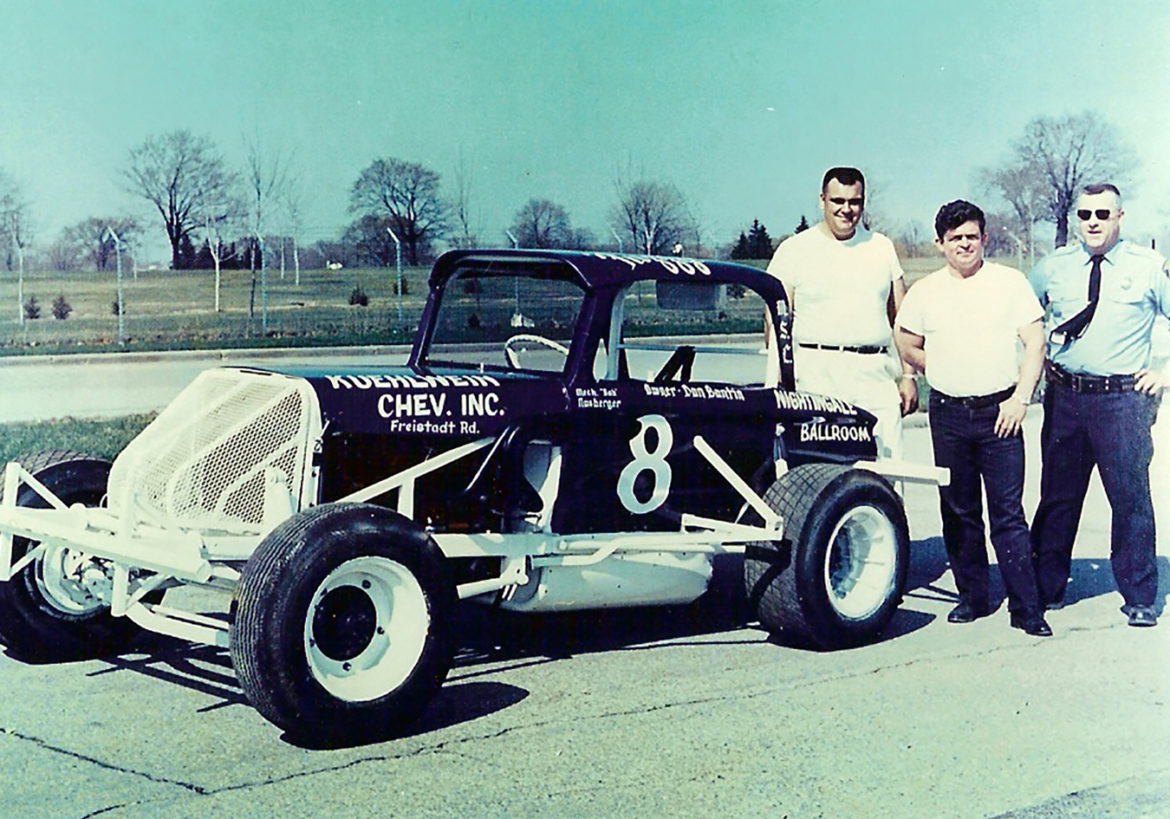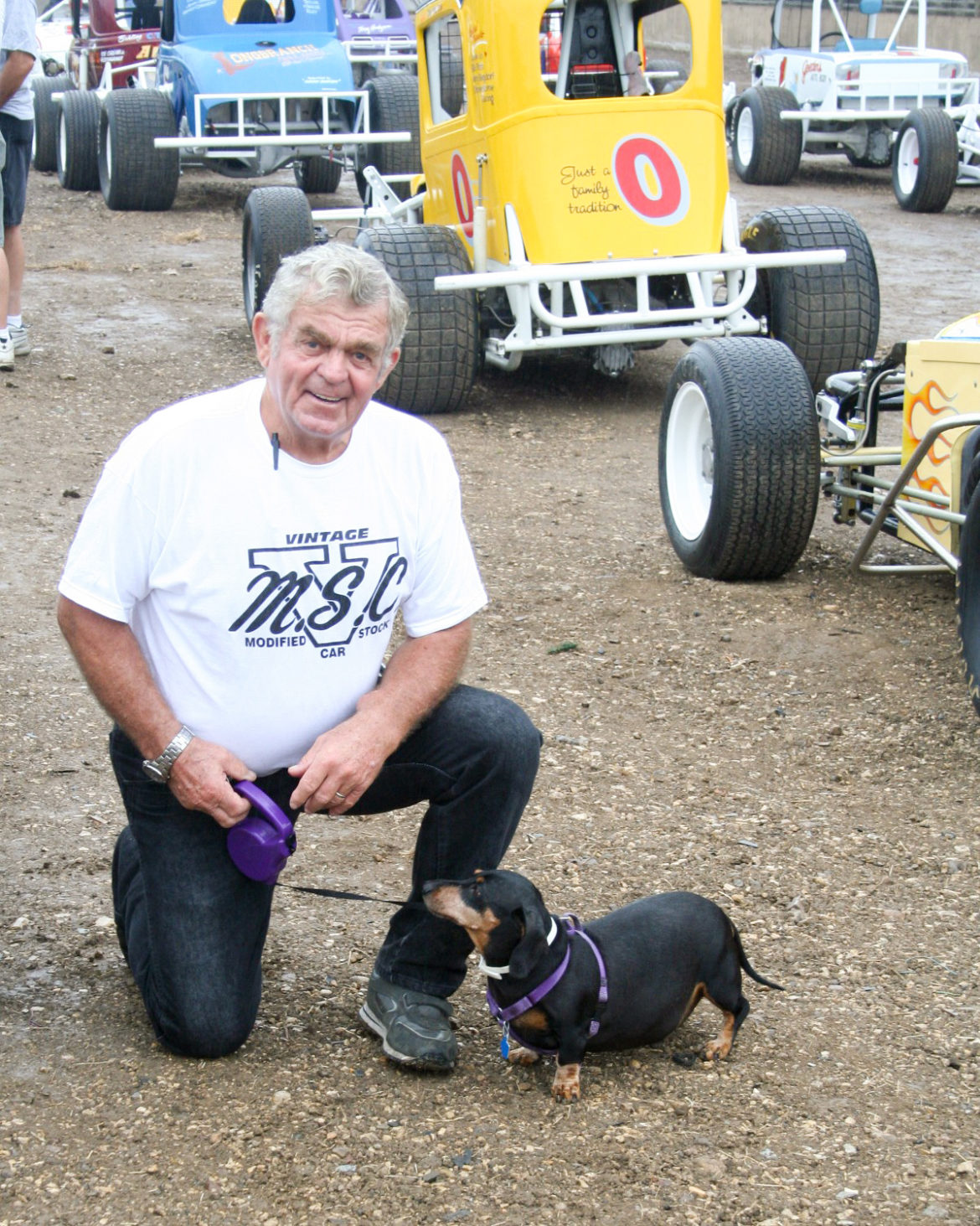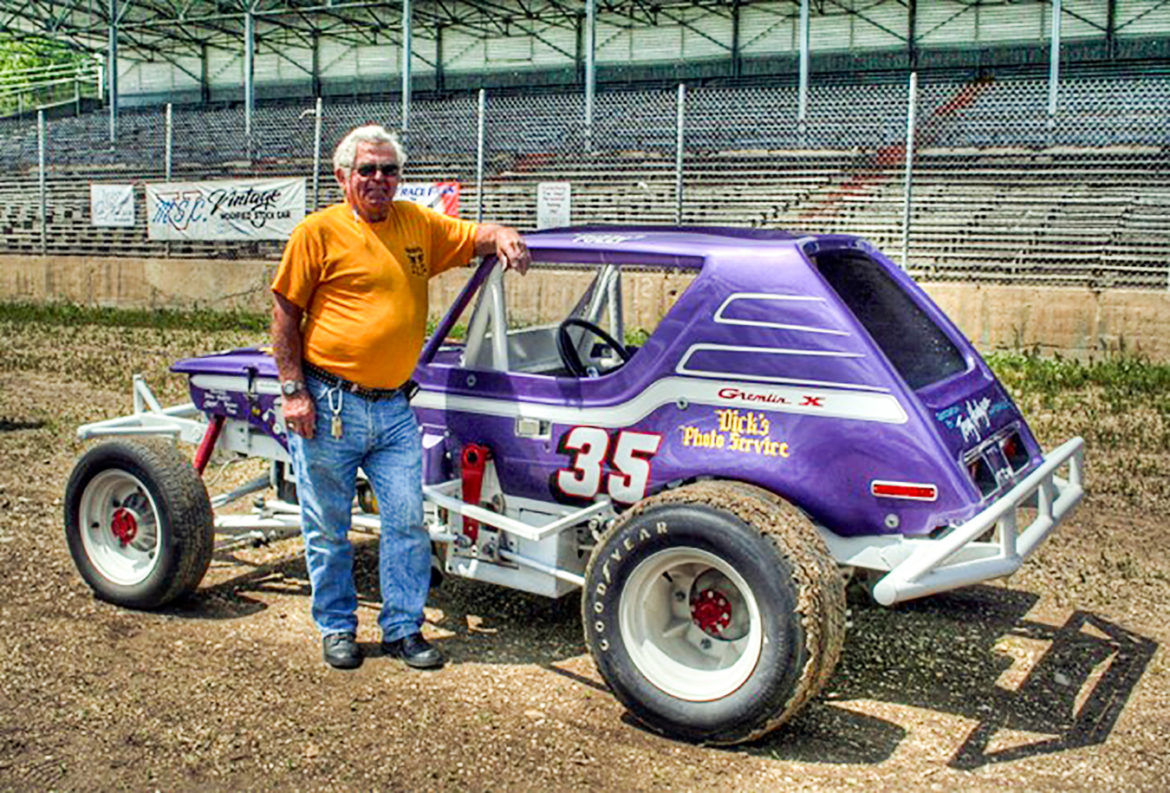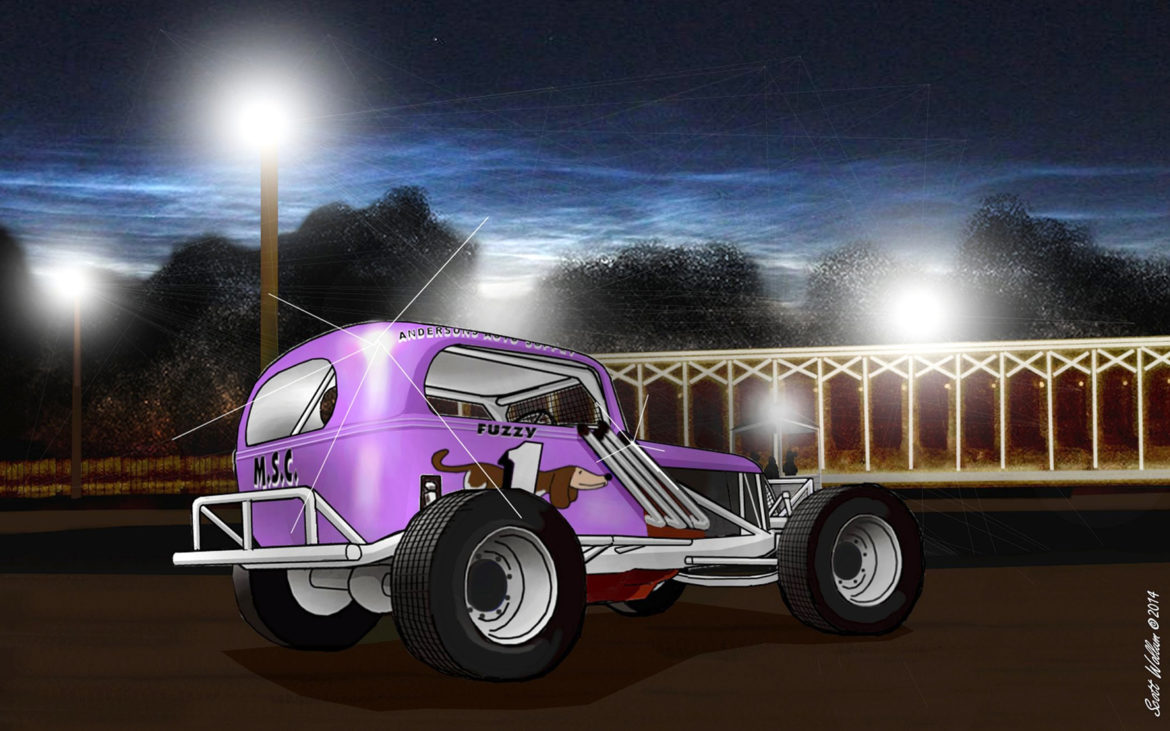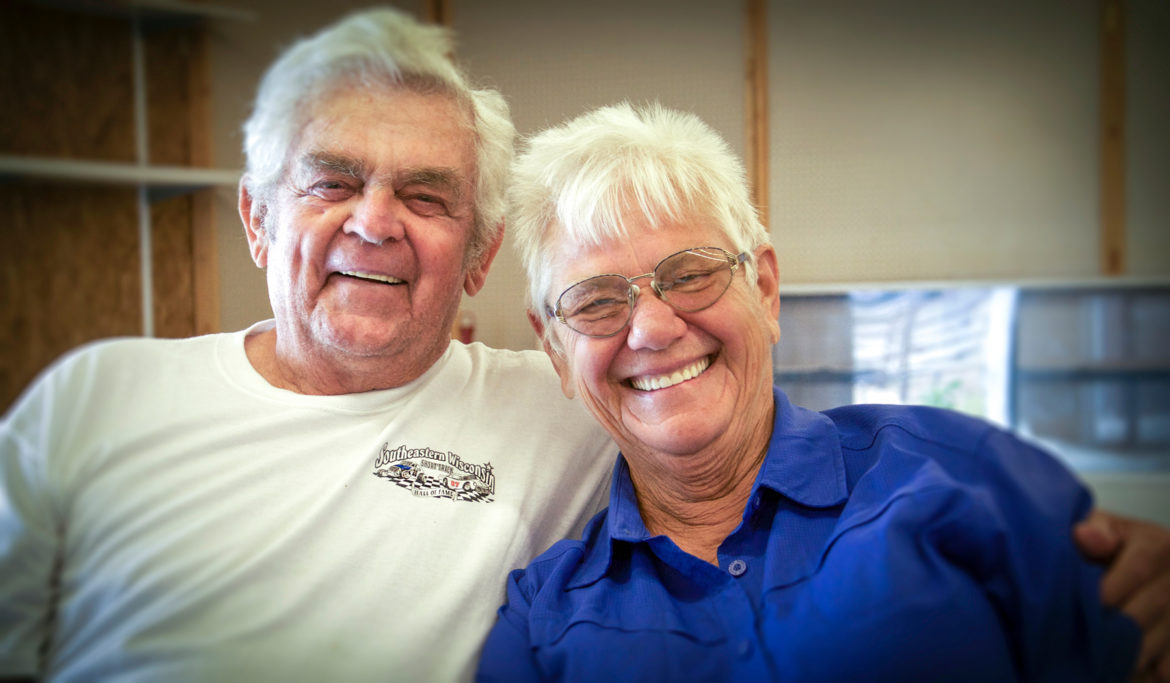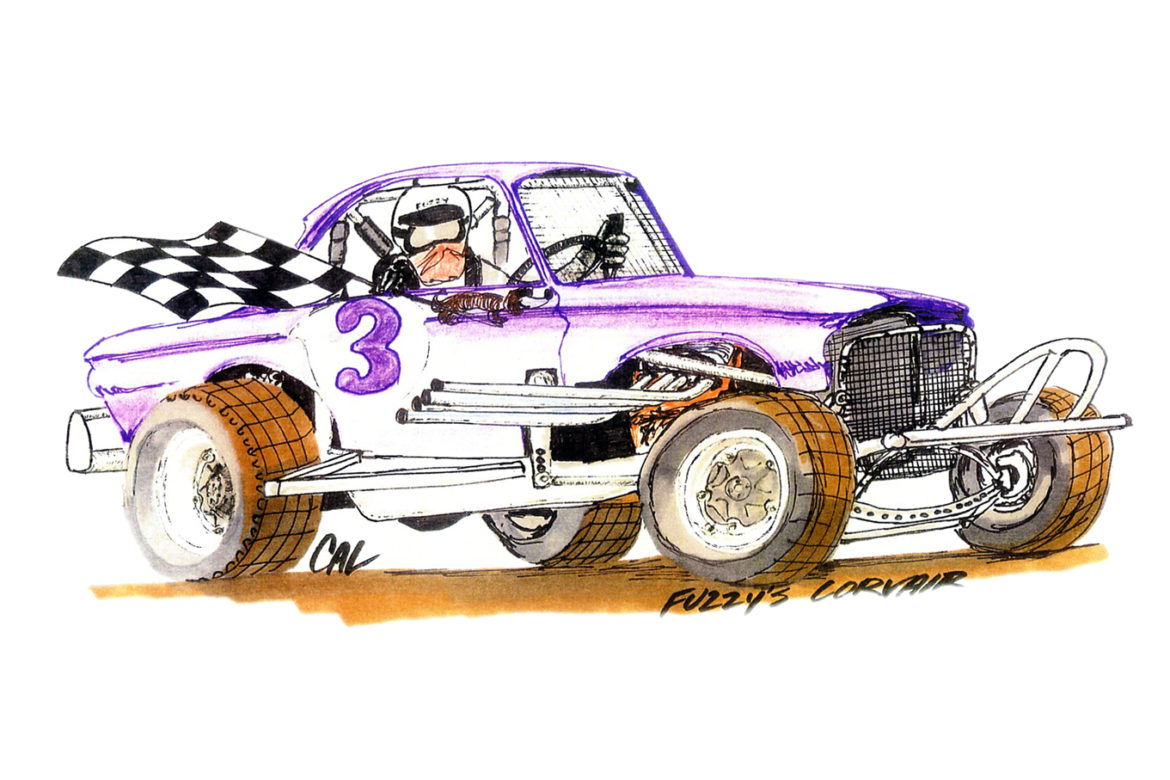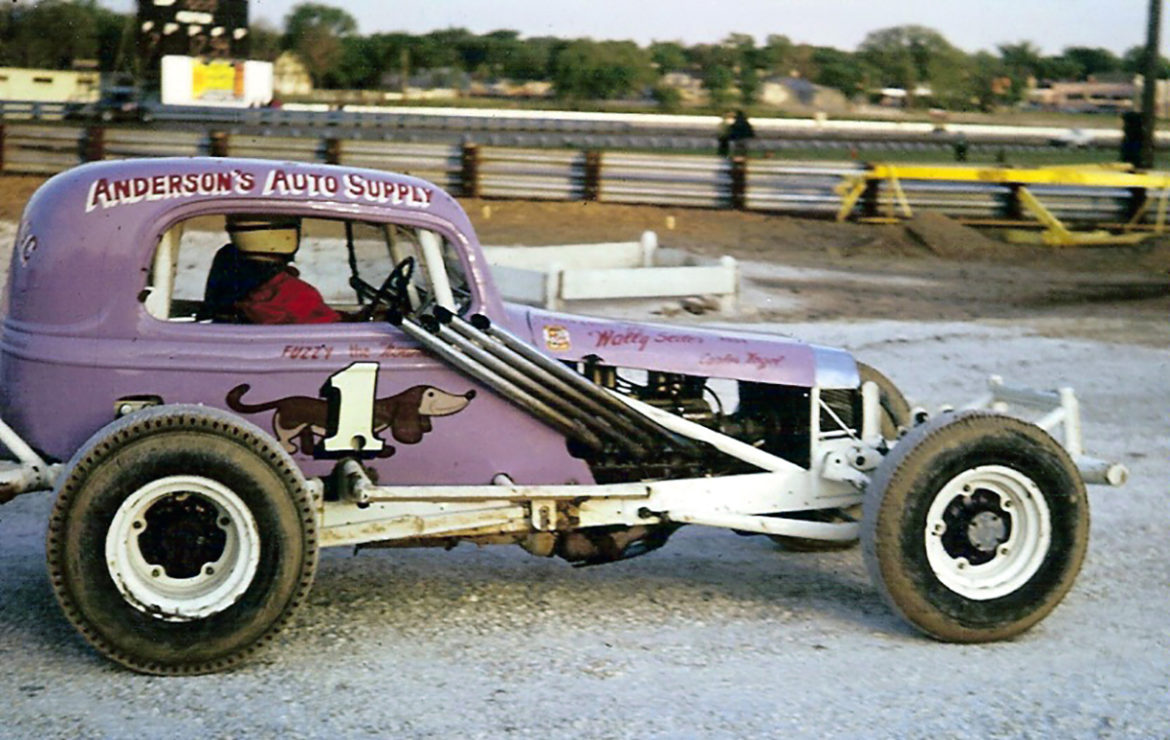Fuzzy “The Hound” Fassbender – Feature Story & Video Interview
Publishers note: This Feature Article originally appeared in our July / August 2015 print edition.

Dave Magnus
By: Dave Magnus
In 1949 a young man who just wanted to have some fun took the wheel of a midget racecar. He wasn’t looking to become famous or try to get into big time auto racing like young racers of today, he just wanted to have some fun. That fun continued on through 1982, when the racing career of one of the most iconic local heroes ended after 33 years. Ernest Fassbender was nicknamed “Fuzzy.” He would become a household name and a legend on Wisconsin and Illinois racetracks over those 33 years. Along the way, he picked up an additional nickname and became known as Fuzzy “The Hound” Fassbender, owing that title to his ever-present wiener dogs that followed him around area racetracks among his legion of fans.
In those early days, midget cars raced at places like Slinger, Plymouth, Cedarburg and Sun Prairie. Many drivers literally risked their lives in those formative years in open cockpit cars with no roll bar protection or flame retardant driver suits. Many perished or suffered serious injuries doing what they loved. The late Elmer Zehlof of Hartford was the car owner who gave Fuzzy his chance in a midget car back in those days, and he became the most helpful person in his racing career.
Full-bodied stock cars, or jalopies, became popular in the early 1950s and nearly every fairground had a racetrack. Races were held at places like Oakfield, Rio, Chilton and Portage, mostly in the daylight because in most cases tracks had no lights. Often those stock cars were driven to the track, raced, and then driven home, provided no serious damage had been done to the car during competition. Fuzzy earned his first track championship in these cars in 1956 at Hales Corners.
As the racing became more serious, cars began to be lightened and bodies chopped down to allow for faster speeds. Soon a special frame was built, engines were set back, glass was removed, and tires made just for racing replaced street tires; the birth of what became known as “modified stock cars” took place. In 1957 Fuzzy Fassbender ran one of those chopped modified stock cars and with it he became the Waukegan, Illinois track champion. Soon these cars became so popular that a weekly circuit, the Milwaukee Stock Car Association, was established with area racing on Tuesday at Beaver Dam, Wednesday at Cedarburg, Thursday at Wisconsin State Fair Park, Saturday at Hales Corners or Wilmot and Sunday at Slinger or Waukegan. A racer could find a track to run five to six nights a week, and if he was fast he could earn more money racing than he did on his 40-hour job.
The popularity of these uniquely crafted, no two looking the same racecars was heightened by the competition and rivalries between the drivers, night in and night out. The popularity skyrocketed in the early 1960s when each car began to carry a caricature of a cartoon character on it next to the car number. The legends were born: Miles Melius of Slinger carried a “Mouse” on his car, the late Billy Johnson Jr. of Slinger was “The Cat,” Fuzzy was “The Hound” and Willie Goeden of St. Michaels was “The Rabbit.”
Racing reporters of the day had fun with headlines in daily papers and racing publications declaring that “The Cat” caught “The Mouse” to win a race, and so on.
Fuzzy drove for many car owners in those days like the late Wally Seiler of Beaver Dam and Dan Bantin of Menomonee Falls, and he enjoyed much success. His skills were in demand behind the wheel of a modified stock car. In 1962 Fuzzy won track championships at Slinger, Cedarburg, Hales Corners and Beaver Dam, en route to the Milwaukee Stock Car Association area point championship which tallied season long points from all four tracks to crown an overall champion. Many have won the area championship, but only two others dominated the circuit winning a track title at every track in a given year. An example of his dominance during one week of that 1962 season included winning a 50-lap feature at Cedarburg on Wednesday, a 100-lap feature at State Fair Park the next night, a 50 lapper at Hales Corners on Saturday, and then to close out the week, he won a 30-lap feature at Slinger on Sunday. In those days the faster cars started in the back of the field and had to earn their way to the front in short order on those quarter-mile tracks. Winning the overall championship meant you were to carry the #1 on your car for the following season, and that #1 looked great on the Fassbender purple color, a trademark of all his cars. The innovative body styles that were used on his creations, such as a Mustang, a Corvair, and a Gremlin, were another trademark of the Fassbender cars.
Those glory days of short track racing with modified cars ended about 1972 when the Milwaukee area tracks switched to late models as their top class. Slinger became a paved track in 1973 and only Beaver Dam ran modified stock cars on a weekly basis, still on Tuesdays. Most drivers switched to the Eastern Wisconsin Stock Car circuit to run at Francis Creek on Thursday nights and Plymouth on Saturday nights, reducing their schedules from five or six nights a week to two or three. Fuzzy earned his last track championship in 1975 at Beaver Dam, but he was a top runner, and still a fan favorite, on the Eastern circuit until his retirement.
Mention the name Fassbender in 2015 and people will start talking to you about how they used to go to the races back in the day, every Saturday at Hales Corners or Sunday at Slinger or Tuesdays at Raceway Park in Beaver Dam, to watch Fuzzy and other local heroes wrestle their homemade creations known as modified stock cars. In their Rubicon home, Fuzzy and his wife Judy raised five children, Kent, Kelly, Lana, Tiffany and Lance, amidst those years of racing. Their sons Kent and Lance each raced at some of the same tracks their father had raced at. Fuzzy was inducted into the Southeastern Wisconsin Short Track Hall of Fame in 2007.
